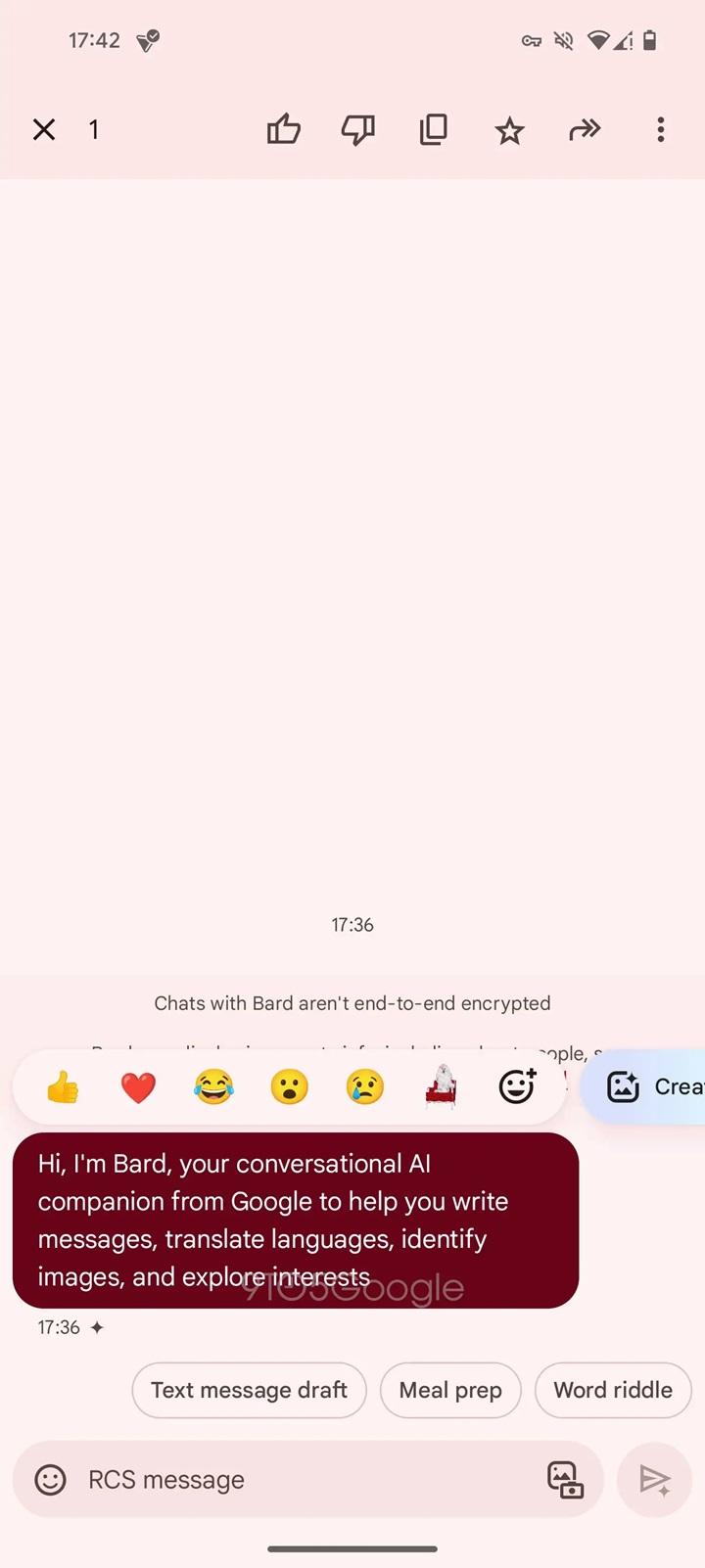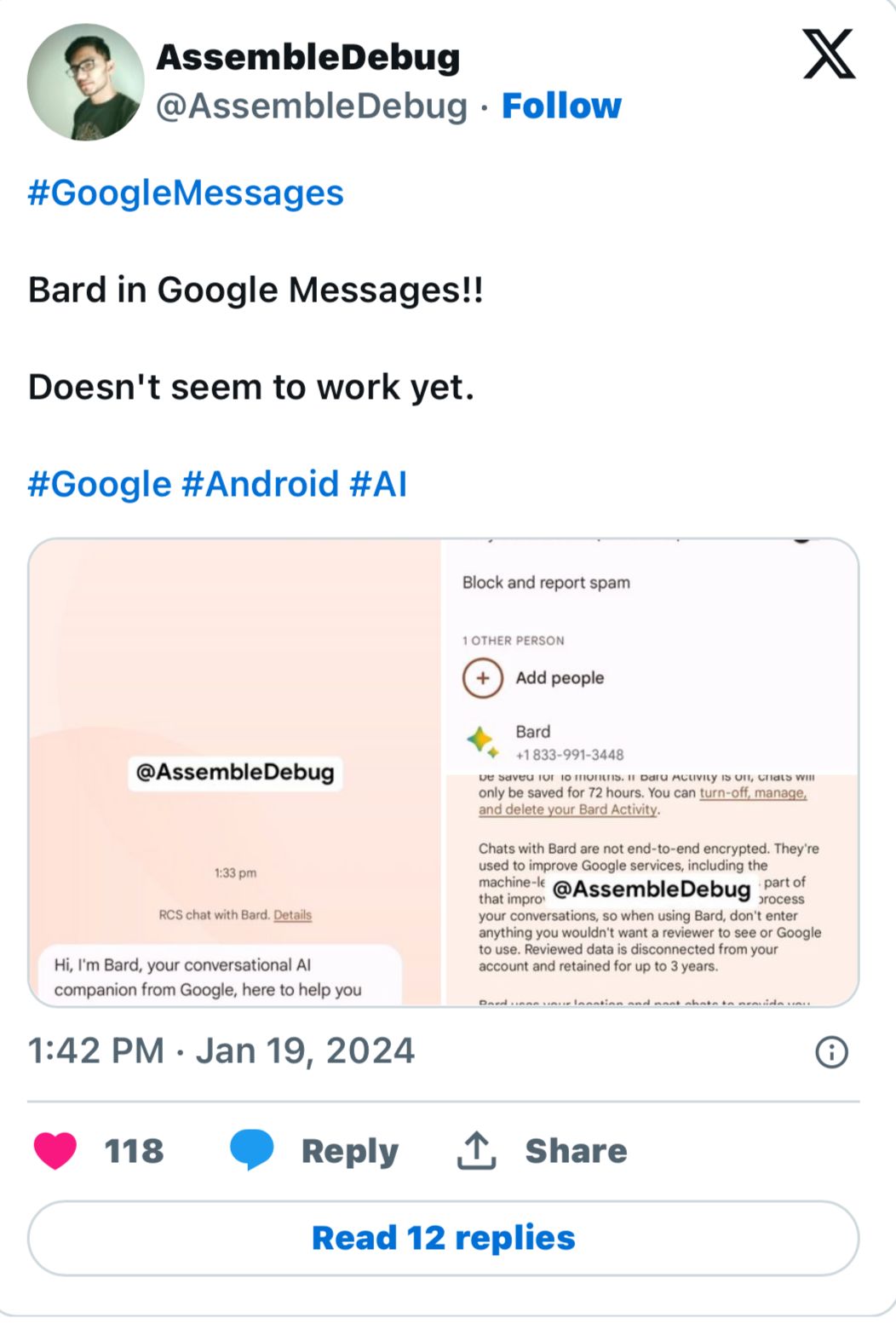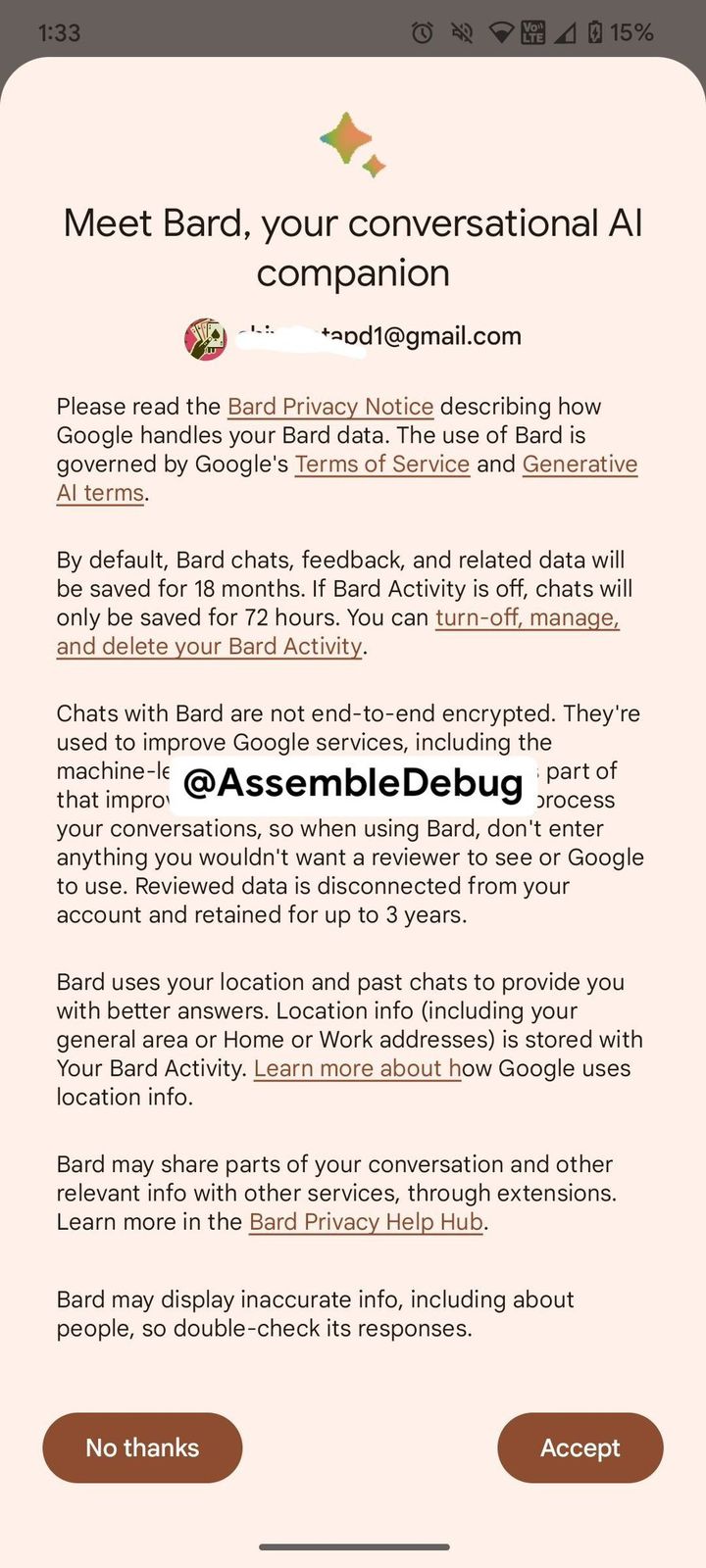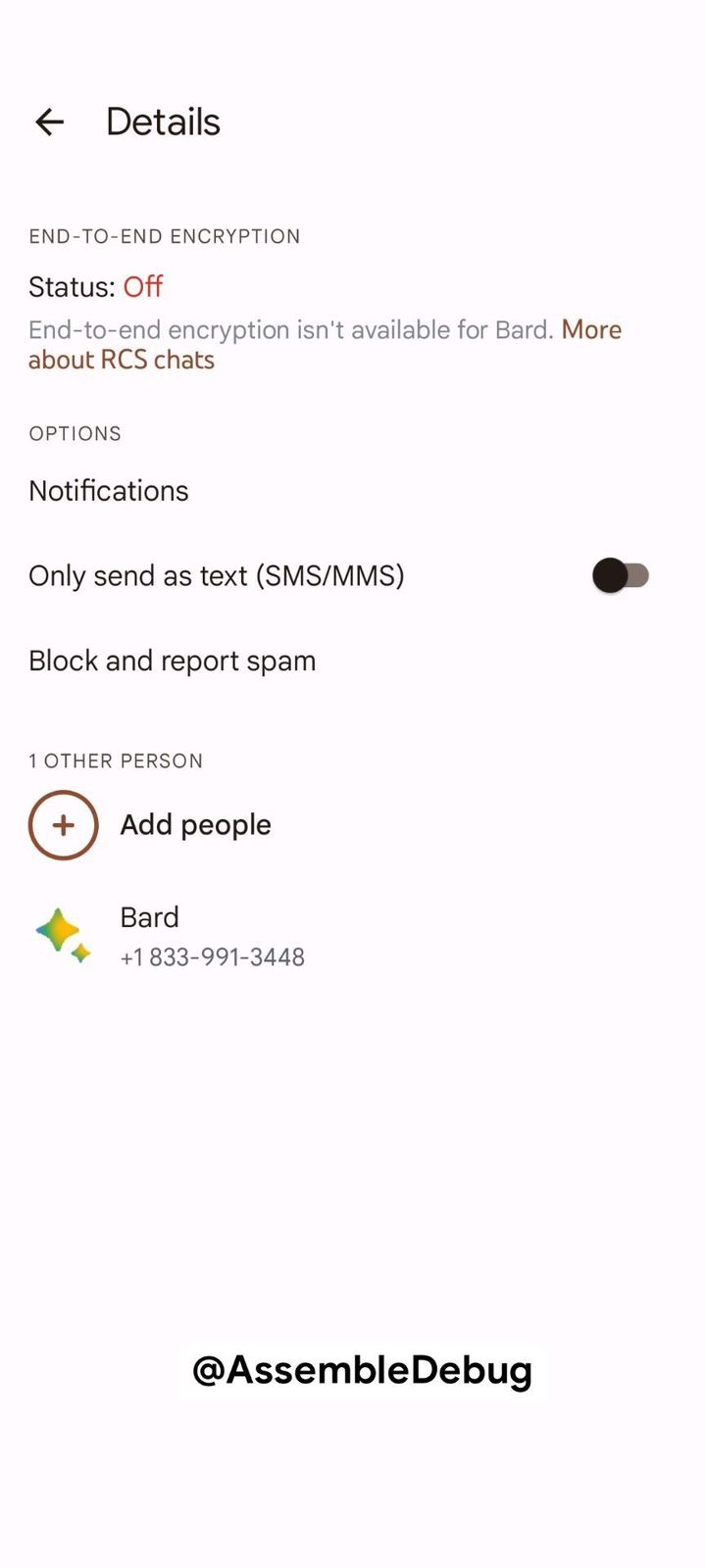Highlights
- Bard, as a standalone chatbot, revolutionizes interaction within Google Messages.
- Offers advanced features like message writing assistance, language translation, and image identification.
- Conversations with Bard not end-to-end encrypted to improve AI learning.
- Google opts against a separate Bard app, focusing on integration into existing platforms.
This move brings an advanced AI chatbot directly into one of the most widely used messaging apps, marking a significant step in the evolution of how we interact with technology.
Bard’s Integration into Google Messages

Bard, codenamed “penpal,” is set to revolutionize the way users engage with Google Messages.
Unlike traditional messaging, Bard appears as a standalone chat, identifiable by its unique logo and name at the top of the conversation.
This integration is reminiscent of Google Allo’s Assistant feature but takes a leap forward in AI communication.
Bard promises to be more than just a chatbot.
It’s designed to assist users in writing messages, translating languages, identifying images, and exploring interests.
This array of functionalities signifies Google’s commitment to enhancing user experience by leveraging AI’s vast potential.
Bard in Google Messages aims to be a personal assistant, enriching conversations and providing users with instant, AI-powered support.

Privacy and User Security with Bard

Initiating a chat with Bard brings up an important privacy notice.
Google has clarified that conversations with Bard are not end-to-end encrypted, a decision made to further train the AI’s machine learning capabilities.
Users are advised to be mindful of the information shared in these chats, as Google intends to use this data for improving Bard, albeit disconnected from individual accounts and retained for up to three years.
Google’s decision not to launch a standalone Bard app, as revealed during I/O 2023, underscores its strategy.
Instead of a separate application, Google is focusing on embedding Bard into widely-used platforms like Google Messages.
This approach aligns with Google’s vision of integrating AI seamlessly into everyday applications, making advanced technology accessible and practical for daily use.
While the timeline for Bard’s full integration into Google Messages is not yet clear, its arrival is eagerly anticipated.
Google’s commitment to rolling out Bard as an experiment through web-based experiences and integrated applications like Messages is a testament to its innovative approach in the AI space.

FAQs
What is Bard in Google Messages?
Bard, codenamed “penpal,” is an AI chatbot integrated into Google Messages.
It functions as a standalone chat feature, offering assistance in tasks such as writing messages, translating languages, identifying images, and exploring user interests, enhancing the overall messaging experience.
How does Bard differ from traditional chatbots?
Unlike typical chatbots, Bard in Google Messages brings a more advanced level of AI interaction, providing functionalities that go beyond basic communication.
Its integration into a widely-used app like Google Messages makes it a more accessible and versatile tool for users.
What should users know about privacy with Bard?
Users should be aware that chats with Bard are not end-to-end encrypted, a decision by Google to facilitate the improvement of Bard’s AI capabilities.
Google advises users to be cautious about the information they share in these chats, as the data may be used for AI training purposes.
Why didn’t Google create a standalone app for Bard?
In line with Google’s strategy revealed during I/O 2023, the company chose not to release a separate Bard app.
Instead, Google is focusing on integrating Bard into daily-use applications like Google Messages to make advanced AI technology more seamlessly accessible.
When was Google Bard released?
On March 21, 2023, Google began opening access to Bard, inviting users to join a waitlist. On May 10, 2023, Google removed the waitlist and made Bard available in over 180 countries and territories.
Google Bard was initially announced on Feb. 6, 2023, with a vague release date. Many believed that Google felt the pressure of ChatGPT’s success and positive press leading them to rush Bard out before it was ready.
For example, during a live demo by Google and Alphabet CEO Sundar Pichai, it provided a query with a very wrong answer.
In the demo, a user asked Bard the question: “What new discoveries from the James Webb Space Telescope can I tell my 9-year-old about?” In Bard’s response, it mentioned that the JWST “took the very first pictures of a planet outside of our own solar system.”
Astronomers took to social media to quickly point out that the first image of an exoplanet was taken by an earthbound observatory in 2004, making Bard’s answer incorrect.
The next day, Google lost $100 billion in market value — a decline attributed to the embarrassing mistake.
Who can use Google Bard?
Users must be 18 or older and have a personal Google account. Bard is available in more than 230 countries and territories and more than 40 languages.
What are the limitations of Bard?
Like all AI chatbots, Bard must learn and be trained to give the correct answer from inaccurate or misleading information, as was evident during its first demo. AI training is an endless, compute-intensive process since there is always new information to learn.
Is Bard free?
As of this writing, Google has given no indication that it will charge for use. Google has no history of charging customers for services — its cloud business notwithstanding. The current assumption that Bard will be integrated into Google’s basic search engine indicates that it will be freely available for use.
How to access Google Bard AI?
Currently, only a small number of people have access to the Google Bard AI link for testing purposes. To reduce the amount of time and energy spent on computation, Google is developing a “lightweight model version of LaMDA.”
Google Bard AI chatbot, known as Bard, is unfortunately not yet widely available for use. However, once the Google Bard AI link is shared, it will likely be integrated into Google Search and can be accessed by asking questions through the search bar. The chatbot draws information from the web to provide up-to-date answers to text prompts.
It is designed to provide easy-to-digest answers to complex questions and can help with tasks such as planning a baby shower, comparing movies, and getting lunch ideas. It is not yet known if the chatbot will be available through other Google products such as Google Assistant or Google Maps.
Google Bard vs. ChatGPT.Details?
Both Google Bard and OpenAI’s ChatGPT are AI chatbots, meaning they are designed for interaction with people through the use of natural language models and machine learning.
Both use a large language model (LLM), which is a machine learning model for generating and creating conversational text.
ChatGPT uses generative AI, meaning it can produce original content. For example, users can ask it to write a thesis on the advantages of AI. Google Bard does as well — although it serves a slightly different use. Bard is geared to make search more natural and helpful and does synthesize new information in its answers
That said, ChatGPT is also capable of helping refine searches. In January 2023, Microsoft signed a deal reportedly worth $10 billion with OpenAI to license and incorporate ChatGPT into its Bing search engine to provide more conversational search results, similar to Google Bard. That opens the door to other search engines to license ChatGPT, whereas Bard is meant to support only Google.
One of the larger differences between the two is that ChatGPT’s responses are based on data available up to April 2023, whereas Google Bard will be based on up-to-date, current data. For ChatGPT to be viable as a search engine technology, it must be able to answer questions with up-to-date data, not two-year-old data. ChatGPT can browse the web when prompted, despite its training data cutoff.
OpenAI is aware of the potential for plagiarism with ChatGPT and offers a plagiarism detection tool for educators to catch students using it for homework assignments. Thus far, there is no knowledge of whether or not Google Bard has its own plagiarism detection tool.
Bard does cite other content in its responses sometimes and links to the source. Bard’s double-check function searches Google for information similar to its generated content and provides a URL to the source of that information.
Also Read: 2023’s Biggest Controversies in Tech: DeepFakes, Sam Altman, Google Bard, Twitter, and More
Also Read: Google’s Bard Chatbot Set To Transform with Next-Gen Gemini AI Enhancement
